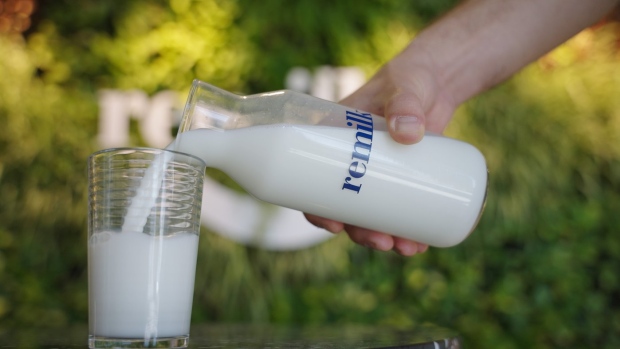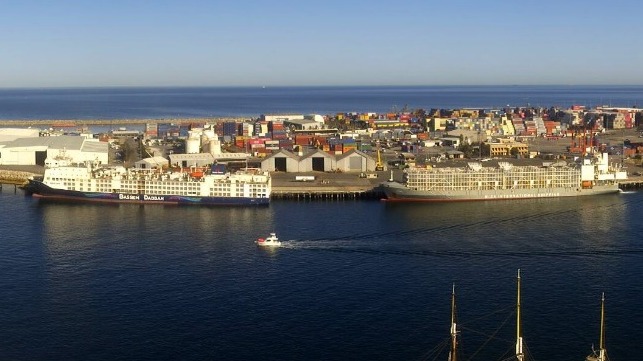How grocery stores get shoppers in the door, entice them to spend more
, The Canadian Press
You've arrived at the store for a quick post-work grocery run, hoping to pick up a cheap, ready-made meal for dinner.
After finding a discounted pre-cooked chicken, you toss a bag of rice and veggies in your shopping cart too, even though neither were on your list.
Oh, and a six-pack of tissue boxes, since you notice they're on sale.
That behaviour plays into a strategy that grocery chains have long relied on to get customers through their doors, even if it means selling a certain popular item below cost, experts say. And with food prices continuing to rise even as overall inflation has slowed, shoppers could be even more vulnerable to overspending after finding a good deal.
Known in the industry as "loss leaders," those bargains are designed to appeal to the customer's desire for savings and convenience, while simultaneously piquing their interest in other products.
"It can entice a large number of customers to change their shopping behaviour once they've entered the store. With that saving in mind, they might be less price sensitive towards other items," said Andreas Boecker, who chairs the University of Guelph's food, agricultural and resource economics department.
"The overall strategy behind the loss leader is that the loss ... is more than compensated by the higher margins and the sales of the other products that are generated by attracting the customer to the store."
At $7.99, Costco's pre-cooked rotisserie chicken serves as one of the more recognizable loss leaders at grocery stores in Canada, while other chains often prioritize discounts on dairy or bread.
Subscription membership programs associated with various chains also increasingly offer deal pricing or points on certain items tailored to the consumer's purchasing trends.
With shoppers vulnerable to temptations, loss leaders are typically placed strategically "to guide the consumers through the store so that they have to pass by as many aisles as possible," said Boecker.
He said not just any product can serve as a hook to reel the customer into the store. One of the most important prerequisites for a loss leader is that it's perishable.
"If you can store it, then of course you would buy an awful lot of the product and then the company would incur a really big loss," he said.
But prioritizing staples for below-cost pricing may not be effective for stores over the long term, said JoAndrea Hoegg, a marketing and behavioural science professor at the University of British Columbia's Sauder School of Business.
"Staples you have to buy anyway, so if they're doing that on a staple they're taking money off the table," she said.
"It would be something that you might not necessarily be buying. Like a rotisserie chicken might be something that's a nice to have; it's not something you're going to buy every week."
A 2014 study published in the journal Economic Letters also explored how loss-leader pricing is used to entice shoppers into purchasing a higher quality version of the discounted item.
Authors Younghwan In and Julian Wright said companies often advertise low prices for certain basic products to make a better quality product's price seem worth the extra money.
"Firms make a loss on some consumers (who buy the basic version of the good) and a profit on others (who buy the upgrade)," the study said.
The ability to take a financial hit on certain products so shoppers will be tempted to spend on others is a luxury that benefits the largest chains, according to a separate 2011 study published in the American Economic Review.
Authors Zhijun Chen and Patrick Rey argued the "exploitative use of loss leading … appears to be a robust feature in market environments where a few large retailers enjoy substantial market power over one-stop shoppers and compete with rivals that focus on narrower product lines."
The convenience factor plays an outsized role in why bigger stores use the strategy so effectively, said Boecker. A shopper may not sweat the extra $5 spent on a product they'll eventually need when they're already at the store.
"That is probably through all income levels, all price sensitivity levels, because we are all time-strapped," he said.
"Convenience really outweighs any cost calculations if you're under time pressure, for example, to get home from work and to have to prepare dinner."
Hoegg said that although a good deal can be hard to resist, it's important for shoppers to employ a certain level of skepticism to avoid getting sucked into an unnecessary shopping spree.
"Companies are not going to give things away unless it is beneficial to them, so it's just thinking it through from the firm's side, having that little bit of persuasion knowledge, (questioning) 'Why is this on sale?'" she said.
"If it seems too good to be true, then just be very careful that you're only buying that product and you're not getting caught up in that sort of shopping wave and spending more than you meant to."
This report by The Canadian Press was first published Feb. 5, 2024.





